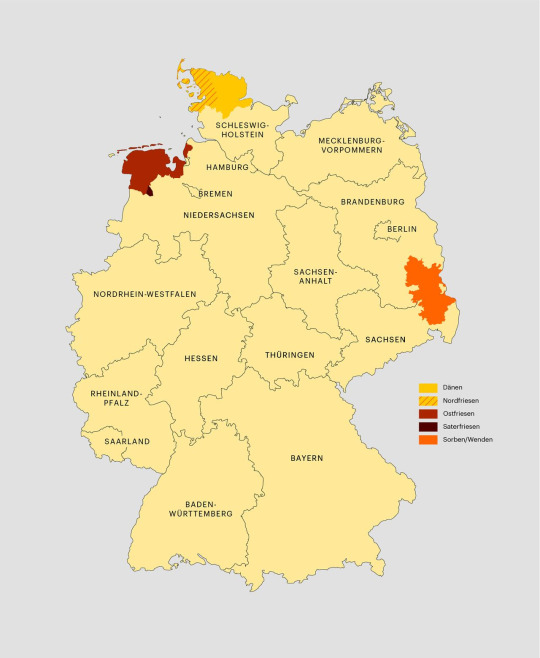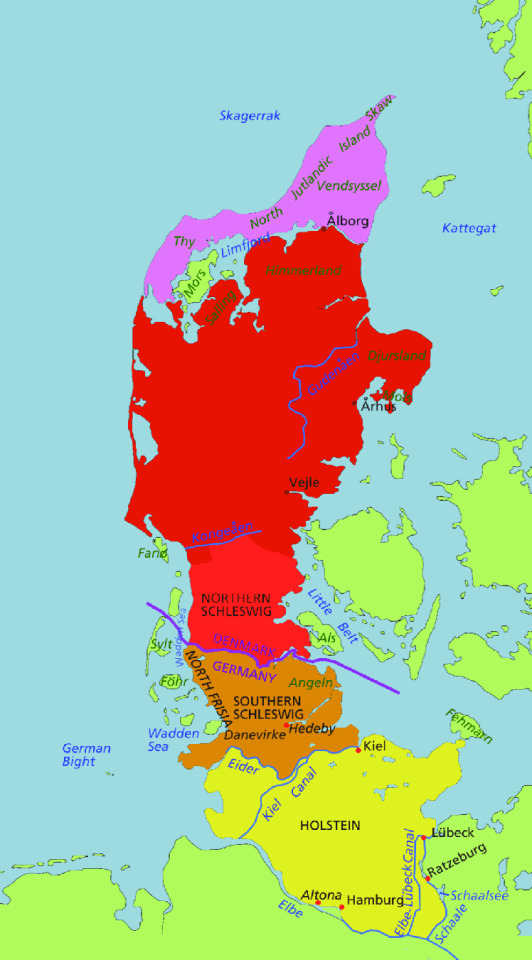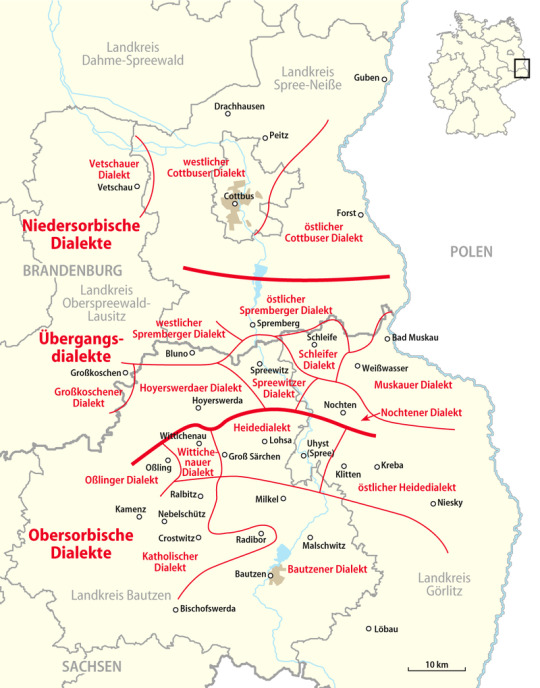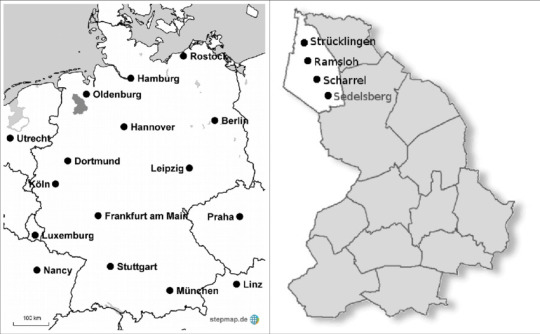#Frisian langblr
Text
The world is so big and so small.
Sometimes I get down thinking that the whole world has been discovered. There aren’t billions other planets and places that we can visit and cultures that we can experience like in Doctor Who or Marvel movies (terrible point of reference I know). I was foolishly worrying the other day that once I “master” Chinese I’ll get bored because there won’t be more that I’m excited to learn. (Ridiculous bc I haven’t even scratched the surface as it is and there will be no end to learning, especially with a language so beautiful and with so much history).
For a bit, I lost interest in other languages I used to love and worried I’d never fall in love with another language. I used to want to learn so many and suddenly felt I couldn’t be bothered.
I’d look at Chinese dramas and think these people are so similar to me, what’s the point of another culture if it’s not that different? (Ridiculous, I know) But this is just another part of the big/small earth dichotomy. Of course it’s different! Cultures can be different and still be made of people who are are fundamentally the same at their core. That’s the point!!!
Anyway, I found myself perusing a language development tree and saw Frisian, which is the closest modern language to English. I’d never heard of it! I looked it up and Google ‘helpfully’ told me that it is spoken in Friesland, which I’d also never heard of. It’s a region of the Netherlands, and there are six (6) branches of the Frisian language. And despite being 80% lexically similar, it is not mutually intelligible with English. Nor is it mutually intelligible with Dutch (official language of the Netherlands).
It is such a delight to discover that there is more to the world than the things I already know or am aware can be learned. I know all of this is obvious and some is the product of irrational/limited thinking. But I think that’s sometimes the beauty of it. Being a little blind and finding new light.
So I looked into how to learn Frisian and found this great (and adorable?) resource . It’s a website with a free program to learn Frisian, including audio files and exercises. With their premium program, you can even interact with native speakers via WhatsApp or Telegram.
There are about 500,000 modern speakers of Fresian. And you can learn their language!! There’s probably not much commercial value to learning it and you aren’t likely to encounter a speaker randomly, but it’s theirs! And you can learn it too!
So my search for novelty lead me to the language most similar to my own. And even now I feel somewhat bad that apparently is biggest claim to fame is that it is similar to English (can’t it be amazing in its own right? It shouldn’t have to live in a shadow!!) But it’s comforting to know that when you think there’s nothing to be discovered, you can find something new so close to home.
I know this post probably comes across as naive and narrow minded. And I know I haven’t written eloquently and the ideas expressed are much more profound in my head. But I was delighted so I wanted to share as best I can.
ALSO!!! The first words I’ve seen so far in Frisian are:
Hello - ‘goeie’
Goodbye - 'oan't sjen' or 'sjoddy'
🤯🤯🤯
I know it’s novelty (that’s the point) but those words seem so much more foreign to me now than 你好 and 再见, despite apparently being so similar to English. I’m so glad I have so much to learn. 😁
I’m still focused on and delighted by Chinese and so excited to visit China soon (hopefully) and study there next year (if everything goes amazingly well). But I might just dabble a little in Frisian for fun. At least enough to figure out what makes it similar to English. (The words I’ve seen so far don’t look similar - is the grammar the same?? I have to know!!)
Thanks for letting me be silly.
#chinese#langblr#resources#Frisian#Frisian langblr#personal#outlook#it’s a small world#and a big world#novelty#thanks for letting me be silly#languages#linguistics
5 notes
·
View notes
Text
Love how in Dutch “verb” is werkwoord (work-word) and in West Frisian it is tiidwurd (time-word)
52 notes
·
View notes
Text

English - Scots - Frisian
Cat - cat - de kat
Dog - dug - de hûn
Mouse - moose - de mûs
Rabbit - kinnin - de knyn
Cow - coo - de ko
Horse - horse - it hynder
Bird - bird - de fûgel
Goldfish - gowdfish - de goudfisk
Duck - deuk - de ein
Snake - snake - de slange
Crab - crab - de kraab
Butterfly - butterflee - de flinter
Ants - eemocks - de eamelders
#scots#scots leid#frisian#Frysk#langblr#languages#language learning#studyblr#corrections welcome#queue
9 notes
·
View notes
Text
Deutschribing Germany
Languages
Most languages native to Germany belong to the Germanic family, but some of them are Slavic languages. German is the official language, with over 95% of the country speaking Standard German or one of its dialects as their first language.
There are six recognized minority languages: Danish, Lower Sorbian, North Frisian, Romani, Saterland Frisian, and Upper Sorbian. The main immigrant languages spoken are Arabic, Dutch, Greek, Italian, Kurdish, Polish, Russian, Serbo-Croatian, Tamil, Turkish, and Ukrainian.

German (Deutsch)
German belongs to the West Germanic group of languages and is the native language of 95 million people. It is the official language in Austria, Belgium, Germany, Liechtenstein, Luxembourg, and Switzerland, as well as South Tyrol in Italy, and is a recognized minority language in ten countries from four different continents.
German Standard German is the standardized variety of German spoken in Germany. Its pronunciation is similar to the German spoken in Hanover. Its alphabet has 30 letters: a b c d e f g h i j k l m n o p q r s t u v w x y z ä ö ü ß. Most German vocabulary is of Germanic origin, but around one fifth was taken from French or Latin. German dialects and varieties are explained in detail in this post.

Romani (rromani ćhib)

Sinte Romani (sintitikes) is the variety of Romani spoken in Germany and neighboring countries. It belongs to the Northwestern Romani dialect group, which in turn is part of the Indo-Iranian branch of the Indo-European family. It is spoken by around 195,000 people and is not mutually intelligible with other Romani varieties.
There is no standard pronunciation or grammar. The alphabet has 31 letters: a b c č čh d dž e f g h i j k kh l m n o p ph r s š t th u v x z ž.
Danish (dansk)
Danish is a North Germanic language with 6 million native speakers. It is the official language of Denmark and the Faroe Islands and a recognized minority language in Schleswig-Holstein and Greenland.

The Danish alphabet has 29 letters, including the 26 found in the English one and æ, ø, and å.
Upper Sorbian (hornjoserbšćina)
Upper Sorbian (Obersorbische Dialekte in the map) belongs to the West Slavic branch and is recognized as a minority language in Saxony, where its 13,000 native speakers live.

Its alphabet has 34 letters: a b c č ć d dź e ě f g h ch i j k ł l m n ń o ó p r ř s š t u w y z ž.
North Frisian (Nordfriisk)
North Frisian is part of the West Germanic branch and is spoken natively by 10,000 people in Schleswig-Holstein. It comprises 10 dialects, which are divided into two groups: insular and mainland.

Its phonology and orthography vary depending on the dialect, but there are 32 basic letters: a ä å b ch d dj đ/ð e f g h i j k l lj m n ng nj o ö p r s sch t tj u ü w.
Lower Sorbian (dolnoserbšćina)
Lower Sorbian (Niedersorbische Dialekte in the map of Sorbian dialects) is a West Slavic language spoken natively by 6,900 people in Brandenburg.
It uses the same letters as Upper Sorbian but adds ś and ź and uses ŕ instead of ř, bringing the total number of letters to 36.
Saterland Frisian (Seeltersk)
Saterland Frisian belongs to the West Germanic branch and is recognized as a minority language in Lower Saxony. It is spoken by 2,200 people and has three fully mutually intelligible dialects.

Its orthography has not been standardized yet, but there are 31 common letters: a ä b ch d e f g h i ie j k/kk ks kw l m n ng o oa ö p r s sch t u ü v w.
Here is Article 1 of the Universal Declaration of Human Rights in the native languages of Germany:
German: Alle Menschen sind frei und gleich an Würde und Rechten geboren. Sie sind mit Vernunft und Gewissen begabt und sollen einander im Geist der Brüderlichkeit begegnen.
Romani: Sa e manušikane strukture bijandžona tromane thaj jekhutne ko digniteti thaj capipa. Von si baxtarde em barvale gndaja thaj godžaja thaj trubun jekh avereja te kherjakeren ko vodži pralipaja.
Danish: Alle mennesker er født frie og lige i værdighed og rettigheder. De er udstyret med fornuft og samvittighed, og de bør handle mod hverandre i en broderskabets ånd.
Upper Sorbian: Wšitcy čłowjekojo su wot naroda swobodni a su jenacy po dostojnosći a prawach. Woni su z rozumom a swědomjom wobdarjeni a maja mjezsobu w duchu bratrowstwa wobchadźeć.
North Frisian: Ali Mensken sen frii, likwērtig en me disalev Rochten bēren. Ja haa Forstant en Giweeten mefingen en skul arküđer üs Bröđern öntöögentreer. (Sylt/Sölring dialect)
Lower Sorbian: Wšykne luźe su lichotne roźone a jadnake po dostojnosći a pšawach. Woni maju rozym a wědobnosć a maju ze sobu w duchu bratšojstwa wobchadaś.
Saterland Frisian: Aal do Moanskene sunt fräi un gliek in Wöide un Gjuchte gebooren. Joo hääbe Fernunft un Gewieten meekriegen un schällen sik eenuur as Bruure ferhoolde. (Ramsloh dialect)
Translation: All human beings are born free and equal in dignity and rights. They are endowed with reason and conscience and should act towards one another in a spirit of brotherhood.
5 notes
·
View notes
Text
I guess it's a list of languages that: I am learning right now and the ones that I'm intending to learn in the future:
Japanese (日本語) - currently learning, really loving it, but I'm very bad at it too, but am trying.
私の日本語がとても下手だ…もっと勉強する必要がある。あまり言葉を覚えてない。
Yiddish (ייִדיש) - tipping my toes from time to time, rn mostly to not forget the Hebrew script, I guess.
איך קען נישט רעדן ייִדיש. אָבער איך טראַכט אַז ייִדיש איז אַ שײנע שפּראַך און איך װיל לערנען זיך עס.
On the "im lookin' 👀" list are: Belarusian (Беларуская) and Frisian (Frysk)
I mean I could try (and then fail miserably) to learn all 4 of them at the same time, but I think that would be a very bad idea xd… I doubt that my dyslexic brain could handle it. So I think the best for me would be to focus on the Japanese right now.
4 notes
·
View notes
Text

Pake & Beppe
Dutch: opa & oma
English: grandpa & grandma
10 notes
·
View notes
Text
All other Germanic languages:

English in comparison:

#langblr#languages#linguaphile#polyglot#german#dutch#english#foreign languages#germanic languages#deutsch#íslenska#norwegian#frisian#swedish#danish#dansk#svenska#norsk#learning german#learning languages
231 notes
·
View notes
Text
Reblog if:
You’re a
gradblr
Or you post any of these languages:
Irish
Welsh
French
Esperanto
Italian
Dutch
Basque
Finnish
Polish
Frisian
Spanish
Bosnian
Croatian
Serbian
Faroese
Icelandic
Swedish
Danish
Lithuanian
Polyglot stuff
Minority/regional/minoritized languages
Excited to follow you all!
#langblr#studyblr#gradblr#studyspo#polyglot#multilingual#cymraeg#gaeilge#french#esperanto#italian#italiano#dutch#finnish#suomi#polish#frisian#spanish#bosnian#croatian#serbian#faroese#icelandic#swedish#svenska#danish#lithuanian#minority languages#minoritized languages
143 notes
·
View notes
Video
youtube
As I also enjoy studying the history of Germanic languages, this incredible video shows their spread and development over the last 2400 years or so. Very useful for my own work.
#germaniclanguages#german#frisian#saxon#anglosaxon#oldenglish#norwegian#old norse#swedish#danish#yiddish#afrikaans#dutch#langblr#languages#foreignlanguages#linguist
3 notes
·
View notes
Photo

Colors in a few other languages of Europe.
Of these, only Hungarian and Romansh are recognized as national languages, by Hungary and Switzerland, respectively. Hungarian is an Ugric language of the Finno-Ugric (or the broader Uralic) language family with about 13 million speakers, most of which live in Hungary. However, there are significant Hungarian-speaking populations in Slovakia, Romania and Serbia.
Romansh is the smallest national language of Switzerland, spoken by about 60,000 people, primarily in the Swiss canton of Grisons. It is a Romance language (of the Indo-European family) sometimes categorized as Rhaeto-Romance along with Ladin and Friulian.
Karelian is a member of the Finno-Ugric language family, like Hungarian, but as a part of the Finnic branch it bears relatively few similarities. It is spoken by about 36,000 people in Northwestern Russia over a fairly large area East of Finland (with some speakers living in the easternmost parts of Finland as well).
Faroese is a North Germanic language, related to Swedish, Danish, Norwegian and Icelandic. It is spoken by about 70,000 people in the Faroe Islands and in Denmark.
West Frisian is a West Germanic language (arguably the closest language to English) spoken by about 470,000 in Friesland, a Northern province in the Netherlands.
#karelian#faroese#west frisian#hungarian#romansh#linguistics#languages#color series#langblr#original content
39 notes
·
View notes
Audio
Nynke Laverman — BETONBLOM
translation from West Frisian (Frysk) by Judith Wilkinson
Ik bin in frou, sizze se (I am a woman, they say)
Ik hear by de minsken. Ik hear by de minsken, sizze se, do bist ien fan ús (I belong with people. I belong with people, they say, you are one of us)
Ik haw in thús, sizze se. Ik hear by de minsken, Ik hear by de minsken, sizze se. Do bist hjir thús (I have a home, they say. I belong with people, I belong with people, they say. You’re at home here)
Ik bin teplak, sizze se. Ik bin in bewenner. In bewenner fan de stêd dêr’t elk wêze wol, Dêr’t elk it rêde wol — mar fol is fol. Net elk dy wurdt hjir âld (I’m settled here, they say. I am a citizen. An inhabitant of a city where everyone wants to be, Where everyone wants to make it — but full is full. Not everyone grows old here)
Ik bin teplak, sizze se. Ik bin in bewenner. In erkende bewenner fan de minskewrâld (I’m settled here, they say. I am a citizen. A recognised citizen of the human world)
Der stean muorren om my hinne. Ik kin rinne fan de keuken nei de kast en wer werom. Der is in flier en in plafond. Ik wurd omearme troch beton, dat my beskermet tsjin wat komt, Tsjin alles wat fan bûten komt (There are walls around me. I can walk from kitchen to cupboard and back again. There’s a floor and a ceiling. I’m enveloped in concrete, that protects me against what’s coming, Against everything coming from outside)
Ik bin in frou, sizze se. Ik hear by de minsken. Ik hear by de minsken, sizze se, dit is wa’sto bist (I am a woman, they say. I belong with people. I belong with people, they say, this is who you are)
Ik bin teplak, sizze se. Ik haw neat mear te winskjen. Ik haw neat mear te winskjen, sizze se, dit is wat it is (I’m settled here, they say. I’ve got everything I need. I’ve got everything I need, they say, this is it)
Der stean minsken om my hinne. Ik hoech nea wer allinne te begjinnen oan ’e dei. Ik bin binnen ik doch mei. Ik wurd omringe troch dejingen dy’t myn taal ferstean, dy’t itselde paad gean al ieuwenlang itselde paad. In libben foarsisber útlisber en folslein útwisber. Nimmen is ûnmisber (There are people around me. I’ll never have to start my day alone again. I’ve arrived I count for something. I’m surrounded by those who speak my language, who tread my path, for centuries the same path. A predictable life, transparent and utterly forgettable. No one is indispensable)
Ik bin teplak, sizze se.Tusken muorren en minsken, Tusken muorren en minsken, dêr is myn plak (I’m settled here, they say. Between walls and people, Between walls and people, that’s where I belong)
Ik haw it fûn, sizze se. Ik haw neat mear te winskjen. Ik haw neat mear te winskjen, sizze se, ik bin ûnderdak (I’ve found the answers, they say. I’ve got everything I need. I’ve got everything I need, they say, I have arrived)
Lûdsticht luchtticht potticht. Gesticht gesticht ik stik ik stik (Sound-proof air-proof life-proof. Madhouse madhouse I’m suffocating I’m suffocating)
Do bist hjir feilich, sizze se (You’re safe here, they say)
Hjir is alles eigen, sizze se (Everything’s genuine here, they say)
Do bist hjir thús, sizze se (You’re at home here, they say)
Do bist ien fan ús, sizze se (You’re one of us, they say)
Ik bin teplak, sizze se (I’ve settled here, they say)
Ik haw it fûn, sizze se (I’ve found the answers, they say)
Ik haw in hûs fan beton yn ’e stêd en in man dy’t thúskomt elke jûn (I’ve got a concrete house in the city and a husband who comes home every night)
Ik bin gelokkich, sizze se (I’m happy, they say)
Ik haw it troffen, sizze se (I’m fortunate, they say)
Ik bin frij, sizze se (I’m free, they say)
De wrâld leit oan myn fuotten (The world’s at my feet)
Ik bin in frou, sizze se, In jonge blom, sizze se (I am a woman, they say, A young flower, they say)
Ik bin in frou yn ’e fleur fan har libben, Mar hoe sjit ik woartel yn beton (I am a woman in the prime of her life, But how do I take root in concrete?)
8 notes
·
View notes
Text

When the Bookdepository website was going to close last year I started looking up things in whatever language and found this in Frisian…
2 notes
·
View notes
Note
Apparently old English is so similar to German and Dutch (or is it Frisian?!).
Frisian, I believe. If I recall rightly Old English and Old Frisian share a much more recent ancestor than they do with German and Dutch, along with Old Saxon. According to wikipedia they were part of a group of languages called the North Sea Germanic or Ingvaeonic.
#i think this might have been in my inbox for a while i'm sorry#old english#frisian#langblr#language blog
4 notes
·
View notes
Text
Languages of the world
West Frisian (Westerlauwersk Frysk)
Basic facts
Number of native speakers: 470,000
Official language: Friesland (Netherlands)
Language of diaspora: Australia, Canada, New Zealand, United States
Script: Latin, 26 letters
Grammatical cases: 0
Linguistic typology: fusional, SVO
Language family: Indo-European, Germanic, West Germanic, Ingvaeonic, Anglo-Frisian, Frisian, West Frisian languages
Number of dialects: 3
History
9th century - earliest written examples
12th-16th centuries - Old Frisian
1498 - replacement of West Frisian by Dutch as language of government
16th-19th centuries - Middle Frisian
>19th century - New Frisian
Writing system and pronunciation
These are the letters that make up the alphabet: a b c d e f g h i y j k l m n o p q r s t u v w z.
-A-, -e-, -o-, and -u- may have acute or circumflex accents.
Grammar
Nouns have two genders (common and neuter), two numbers (singular and plural), and no cases. All plural and common singular nouns take the same definite article.
Unlike nouns, personal pronouns have three genders. Some adpositions are inflected.
Verbs are conjugated for tense, mood (indicative and imperative), person, and number. There are only two inflected tenses, present and past. The rest of them are formed using auxiliary and modal verbs.
Dialects
There are three dialects: Clay Frisian, Wood Frisian, and South Frisian. All of them are mutually intelligible, but have some phonological and lexical differences.
56 notes
·
View notes
Text
You, a Dutch person: Doei
Me, an intellectual on vacation in Frisia: Hoi
34 notes
·
View notes
Link
The best language resource I’ve found in a really long time. Vocabulary (no grammar :/ unfortunately) in 209 different languages!
#langblr#langoland#languages#language#tongueblr#minority languages#galician#portuguese#catalan#spanish#italian#valencian#alsatian#german#swahili#zulu#yoruba#afrikaans#dutch#west frisian#frisian#french#yiddish#luxembourgish#low-saxon#icelandic#norwegian#swedish#danish#prussian
271 notes
·
View notes